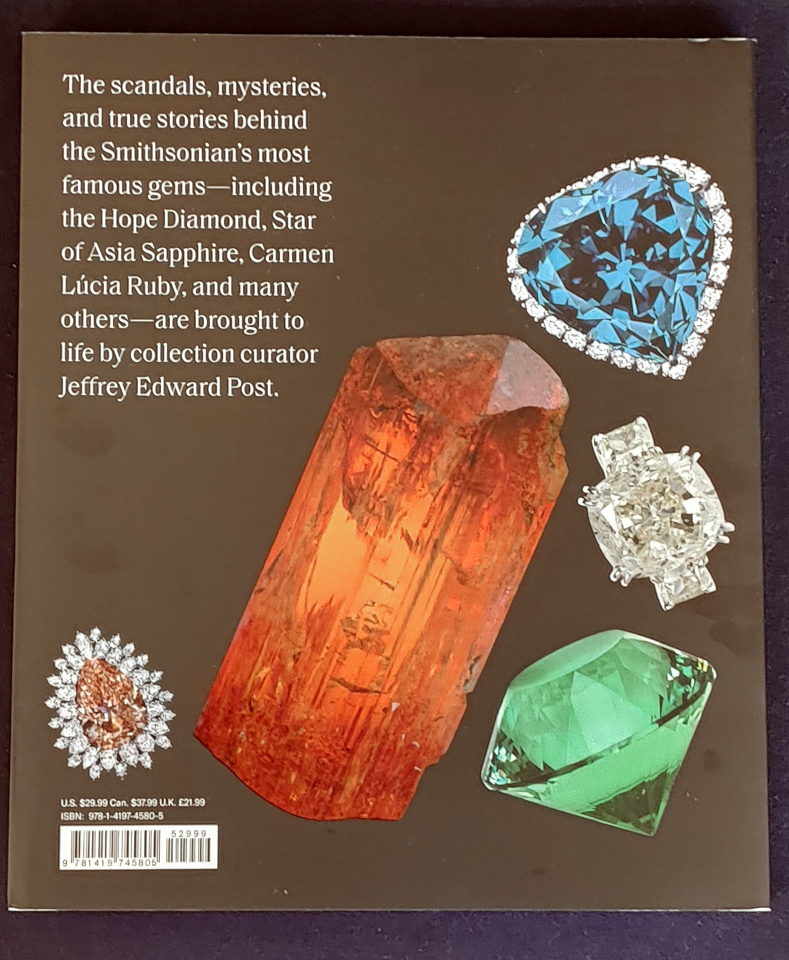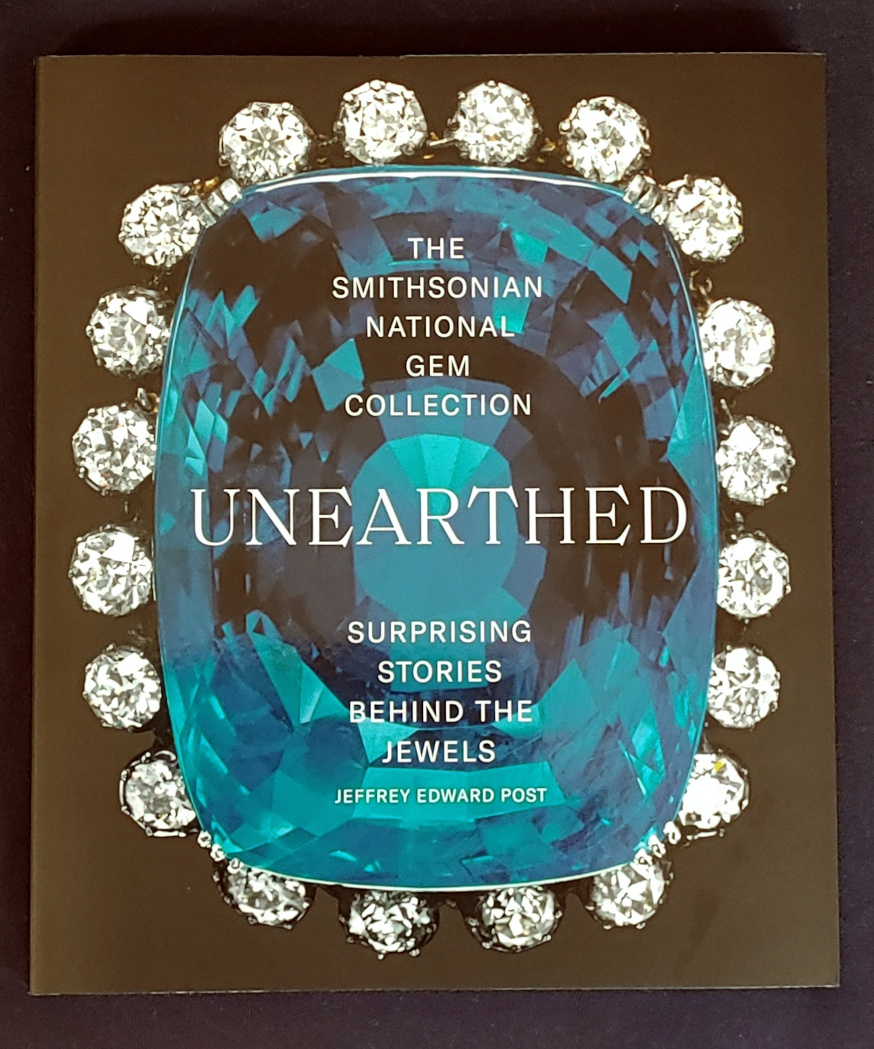To leave the most beautiful collection of jewellery worldwide on display in the Smithsonian Museum for Natural History in Washington, instead of making a huge fuss about it in a newly erected architectural showpiece, is a rather un-American understatement. The collection resides in one wing on the second floor of the Museum on Washington’s central Madison Drive, next to a butterfly zoo and Egyptian mummies. On the floor below young and older visitors can admire fossils and animals preserved by taxidermists in a most natural way. There is a variety ranging from elephants to beetles. To stay in line, the National Gem Collection does not only include high jewellery, but also minerals and lots of information about the mineralization of stones and how they came about.
Most of the museums in Washington do have free admission for visitors, and the Smithsonian is no exception. Washington on a quiet spring or autumn day, with the wide majestic streets and well-kept trees and gardens does give another impression of the United States of America than the one we know from the news. The museum mile with all the splendid buildings has a very special vibe. I remember being thoroughly impressed and feeling decidedly like being in an ancient Greek city, the architecture enforcing the sentiment of another age.
As an avid jewellery lover, I was already full of anticipation before the museum visit quite some years ago, although I did not really know what to expect. I knew the Hope Diamond would be there in the Janet Annenberg Hooker gallery of jewels and minerals, but not much more. For this post I rely on Jefferey Edward Posts newly published book “Unearthed”. As he is the curator of the museum’s gem collection, he is the perfect author-guide and made a very good job in giving all the generous donors credit.
The Hope diamond, allegedly cursed, is indeed there. The stone was most famously in the possession of two people after it disappeared from the French crown jewels during the French Revolution, heiress Evalyn Walsh McLean and master jeweller Harry Winston, who purchased it after her death. He is the real founder of the Smithsonian gem collection, as in 1958 he donated the stone to the Museum of Natural History with the hope of being the first of many donors. It took a little bit of time till others came round, but today it is clear the stone did the trick.
One of the first to give after Harry Winston was Polly Logan, who had a similar big blue stone, but a sapphire, not a diamond. It is pictured on the front cover of the book. There are also huge emeralds and other extremely valuable stones on display.
All the gems and jewels are all wonderfully explained and described in James Edward Posts book. As he had been there to welcome some of the treasures himself, and knows all the stories from former colleagues about the ones that came earlier to the museum, the book is a nice memento to the society ladies that gave them.
Also noteworthy is the “Peggy Hopkins Joyce Diamond”. A flawless 127 carat octagonal shaped white diamond, it is officially named the “Portuguese”, as people believed (wrongly) it came from the crown jewels of the country. As this is not true, a more appropriate way of naming the stone is after its most famous owner, showgirl-turned-rich-wife-turned-poor-again, Peggy Hopkins Joyce. She was the archetype of a so called “gold digger” of the 1920s and 1930s, and she wore the diamond with all grace and coolness needed. Harry Winston donated the diamond to the Smithsonian Museum in 1963 and Edward Post recommends the name “Peggy Hopkins Joyce Diamond” which I follow here.
The highlight of my visit was the jewellery donated by Marjorie Merriweather Post. She gave mostly not the big bulky stones others gave and that impress through pure size and value, but pieces of artful jewellery that have a history of adorning beautiful and rich women. The story of the gem collection at the Smithsonian Museum in Washington DC is also her story. She was not the most famous or scandalous of the super-rich in the 1920s, but the most likable, responsible, and down to earth of them all. In the 1960es, towards the end of her life, she donated quite some of the most spectacular pieces. On the back cover we see her “Blue Heart Diamond”, which rivals the “Hope Diamond”.
She gave the museum a diadem that belonged to Napoleon’s second wife Marie Louise and it is a real stunner, even more with the newer turquoises then the original emeralds. There are pictures showing her wearing the diadem. If anyone becomes interested in her life and times, there is a really good book about her (see below). Next to the diadem, she gave earrings that once belonged to Queen Marie Antoinette and a diamond necklace given by Napoleon to his wife. The necklace was for a very long time in the possession of the Austrian Imperial family before it came mid last century to jeweller Harry Winston and then to Marjorie Merriweather Post who donated it finally. Less grand than the Marie Louise Diadem, the Post Diamond Tiara, was especially bought by Mrs. Post for the museum a few years before her death. The tiara is made in the “en-tremblant” style, meaning there is a slight movement of the stones whenever the wearer moves. Not many of these jewels survived, and Marjorie Merriweather Post made sure one of them is in the museum.

On the back cover of Jeffery Edward Posts book (he is not related to Marjorie’s super rich family by the way) we can admire a small arrangement of minerals and gems from the collection. The “Blue Heart Diamond” was already mentioned. The “Freedom Diamond” is of US-American origin, which makes it very special as the largest facetted diamond ever from the country. We can also see a topaz crystal (orange) and a beryl facetted green stone from the collection.
The prettiest jewel shown there is part of the “Thompson Diamond” set. Here again we meet Harry Winston, who made the arrangement of white diamonds and large cognac ones. A brooch and earrings, the colour combination is wonderful, and even today not so often seen. Cognac diamonds are widely underestimated compared to their more famous white and blue brothers.
When looking at the ever-growing collection today, it is as telling whose name is on the donators list as it is whose not. The museum only exhibits stand alone pieces, but as Angelina Jolie did, one can find stand-alone pieces if one has the money and wants to. The necklace she gave is quartz based and features the large “Jolie Citrine”. The value of this jewel is less than that of the diamonds and sapphires others gave, but the statement is made. Jewellery looks best when combined with character.
The Smithsonian National Gem Collection is a wonderful combination of beauty, art and knowledge. In short: a great place to visit.
All rights to the book belong to:
Post, Jeffrey Edward: The Smithsonian National Gem Collection – Unearthed – Surprising stories behind the jewels, 2021. Published by Abrams New York, trademark of Harry N. Abrams, Inc., printed and bound in China, ISBN: 978-1-4197-4580-5
My knowledge about Marjorie Merriweather Post comes mainly from this book:
Rubin, Nancy: American Empress, The Life and Times of Marjorie Merriweather Post, 1995 and 2004, originally published by Villard Books, an iUniverse Star, and iUniverse, Inc. imprint, printed in the USA, ISBN: 0-595-30146-0

